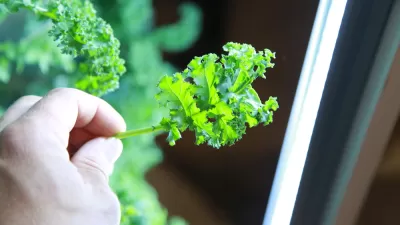Community-supported agriculture (CSA) programs originally let local buyers support local growers. But with a rise in subscription-based "food box" clubs, it's getting harder to say what a real CSA looks like.

There's always been some overlap between alternative and local agriculture, and community-supported agriculture has been a way to operationalize small and local growers for decades. But a new wave of digital entrepreneurs is crowding the space with subscription-based "food box" services, not all of them local.
Samantha Melamed writes, "Now, though, small farmers [...] are finding themselves in competition with a slew of subscription-based food vendors, from meal-kit boxes like Blue Apron to mail-order produce boxes like Farmbox Direct to aggregators who mix local produce with stuff from Florida or Mexico."
Traditional CSA farmers like Emma Cunniff take issue when these services brand themselves as CSAs. "'I've noticed so many cooperative-buying clubs; they're not CSAs, but they have adopted that title because it's really hot and sexy right now. Some of their farms are up to 250 miles away. That's not local agriculture.'"
Nevertheless, the CSA business model has proven useful to entrepreneurs who finance and source from small farming operations. Whether or not they call themselves CSAs—and perhaps they shouldn't—food box subscriptions and similar services have attracted clientele.
FULL STORY: New CSAs may be 'hot and sexy,' but they're not really CSAs

Maui's Vacation Rental Debate Turns Ugly
Verbal attacks, misinformation campaigns and fistfights plague a high-stakes debate to convert thousands of vacation rentals into long-term housing.

Planetizen Federal Action Tracker
A weekly monitor of how Trump’s orders and actions are impacting planners and planning in America.

In Urban Planning, AI Prompting Could be the New Design Thinking
Creativity has long been key to great urban design. What if we see AI as our new creative partner?

King County Supportive Housing Program Offers Hope for Unhoused Residents
The county is taking a ‘Housing First’ approach that prioritizes getting people into housing, then offering wraparound supportive services.

Researchers Use AI to Get Clearer Picture of US Housing
Analysts are using artificial intelligence to supercharge their research by allowing them to comb through data faster. Though these AI tools can be error prone, they save time and housing researchers are optimistic about the future.

Making Shared Micromobility More Inclusive
Cities and shared mobility system operators can do more to include people with disabilities in planning and operations, per a new report.
Urban Design for Planners 1: Software Tools
This six-course series explores essential urban design concepts using open source software and equips planners with the tools they need to participate fully in the urban design process.
Planning for Universal Design
Learn the tools for implementing Universal Design in planning regulations.
planning NEXT
Appalachian Highlands Housing Partners
Mpact (founded as Rail~Volution)
City of Camden Redevelopment Agency
City of Astoria
City of Portland
City of Laramie



























